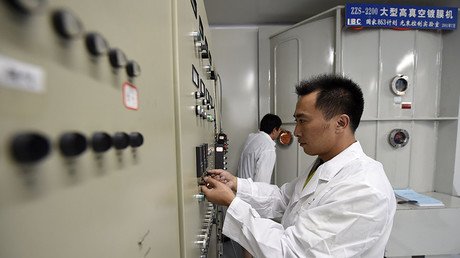Tractor beam breakthrough could one day levitate humans - study

Levitating humans could be in our future, thanks to a scientific breakthrough in acoustic tractor beam technology, which can now lift larger objects than ever before.
Engineers from the University of Bristol have demonstrated that it’s possible to stably levitate objects using the world’s most powerful acoustic tractor beams. Their findings were published in the Physical Review Letters on Monday.
Acoustic tractor beams use soundwaves to hold particles in the air. It was previously believed they could only be used to levitate very small objects which were about the same size as a wavelength of sound, but the research demonstrates the potential for far larger objects to be levitated.
“Acoustic researchers had been frustrated by the size limit for years, so its satisfying to find a way to overcome it,”said the study’s lead author, Dr Asier Marzo of Bristol’s Department of Mechanical Engineering. “I think it opens the door to many new applications.”
The technique creates a tornado-like effect with acoustic vortices, which researchers said are like, "tornadoes of sound, made of a twister-like structure with loud sound surrounding a silent core."
When researchers changed the direction of the acoustic vortices, they were able to stabilize the tractor beam and its rate of rotation. They were then able to increase the size of the core at the center of the sound tornado, allowing it to carry bigger objects.
The team was then able to make a two-centimeter (.7-inch) polystyrene sphere hover within the tractor beam, using ultrasonic waves that humans can’t hear. This is bigger than anything that’s ever been levitated by acoustic beams before, and more than twice as big as the acoustic wavelengths carrying it.
Although the ability to levitate a human is a little way off yet, researchers say all that’s needed is more acoustic power.
“In the future, with more acoustic power, it will be possible to hold even larger objects,” Dr Mihai Caleap, a Senior Research Associate who developed the simulations said. “This was only thought to be possible using lower pitches making the experiment audible and dangerous for humans.”
It’s not just good news for those of us who dream of floating in the air, the discovery has potential in the fields of science, medical surgery and factory production lines.
Think your friends would be interested? Share this story!














